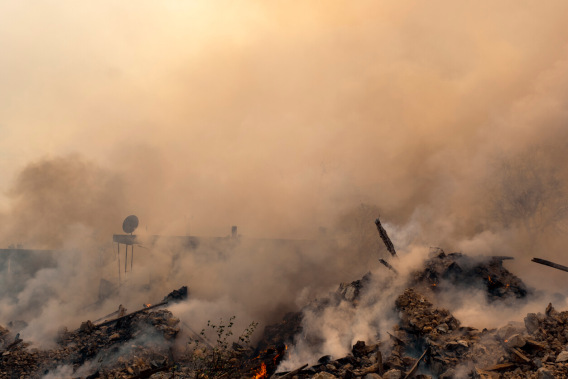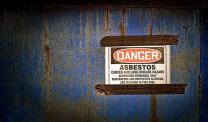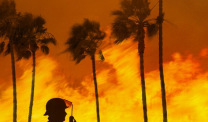Toxic Ash Threatens Health During Maui Lahaina Wildfire Cleanup
Asbestos Exposure & BansWritten by Michelle Whitmer | Edited By Walter Pacheco

Health officials are warning Maui residents to exercise caution during cleanup following deadly wildfires as ash and debris may be filled with toxic substances, including asbestos, arsenic and lead.
The aftermath of the Aug. 8 fire on the Hawaiian island has left a hazardous trail of pollutants and destruction after it decimated the historical coastal port city of Lahaina on Maui’s west coast.
“For generations, Lahaina’s beauty, culture and rich history drew artists, musicians and visitors from around the world,” said Jaime Kanani Green, wife of Hawaii Gov. Josh Green, during an emotional livestream statement. “Tragically, it took less than a single day for us to lose Lahaina in the deadliest fire our country has seen in more than a century.”
At least 114 people are dead and more than a thousand others remain unaccounted for since the blaze, according to the Maui Fire Department.
The inferno sent toxic fumes and materials into the air and out to sea as buildings burned to their foundations and the intense heat melted car tires into puddles. A toxic fallout from the ash and debris is creating a secondary disaster for the small island community.
“We are going from one natural disaster to the next,” Newsha Ajami, a water expert at Lawrence Berkeley National Laboratory, told The Washington Post of the post-fire contamination.
Asbestos Risks During Natural Disasters
Hawaii officials urge children and pregnant women to stay out of the Lahaina burn area and away from the debris and ash from the fire. Those who are working in the area are advised to cover up with long-sleeved shirts, pants and closed-toe shoes to avoid skin contact with the dangerous ash. Workers are also urged to use an N95 mask or respirator when dealing with the cleanup.
“Ash may cause irritation of the skin, nose and throat, and may cause coughing,” according to the Hawaii State Department of Health. “Ash and dust (particularly from burned buildings) may contain toxic and cancer-causing chemicals, including asbestos, arsenic and lead.”
Many homes and commercial buildings constructed prior to the 1980s, like those in historic Lahaina, were built with asbestos materials considered safe at the time. As those products age, rip, break, burn or are washed away, they release toxic asbestos fibers into the air.
It is dangerous to breathe in those fibers during the aftermath of a natural disaster such as the Lahaina fire, and can cause serious health conditions years later. The more a person is exposed to asbestos, the higher their risk of developing an asbestos-related disease such as mesothelioma.
Officials Warn of Toxic Air
As the blaze moved quickly across the town, it incinerated homes, automobiles and all the items inside of them, including building materials that produced the hazards of asbestos, lead and arsenic debris.
Local air quality officials warned residents that the air was dangerously contaminated and that even if a home was not damaged, it was unsafe, according to The Washington Post.
“You can’t have children playing out there. The air quality coming from Front Street with the winds is deeply toxic with asbestos,” Debbie Van Alstyne told the news outlet. “[A local air quality official] says that it’s absolutely not safe for anybody to stay near there. For a while.”
First responders such as firefighters, law enforcement officials, emergency response workers, enlisted military and cleanup crews are often at risk of asbestos exposure following a natural disaster. This includes private contractors, state and local agencies, and volunteers. Homeowners of damaged properties are also at risk of exposure.
To avoid further contaminating the land or sea, health officials urge those cleaning up fire debris to not push the ash into the sewer system or use blowers or vacuums.






